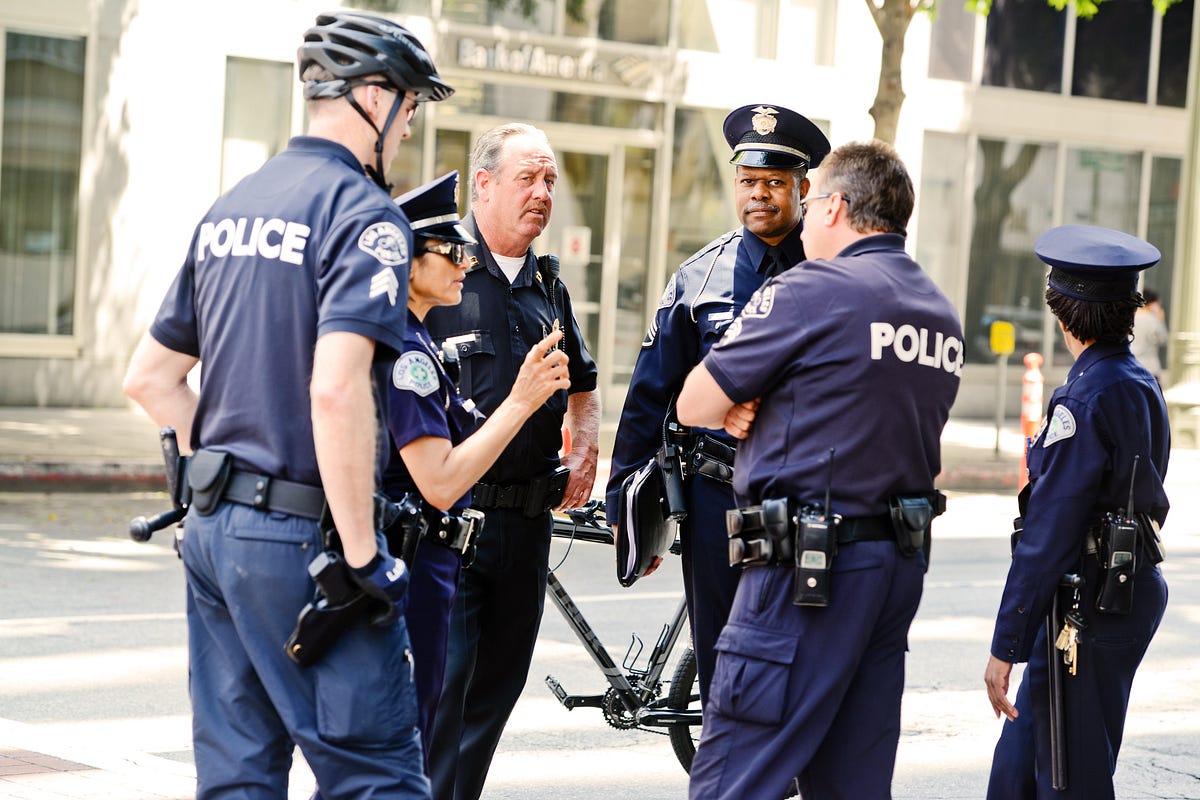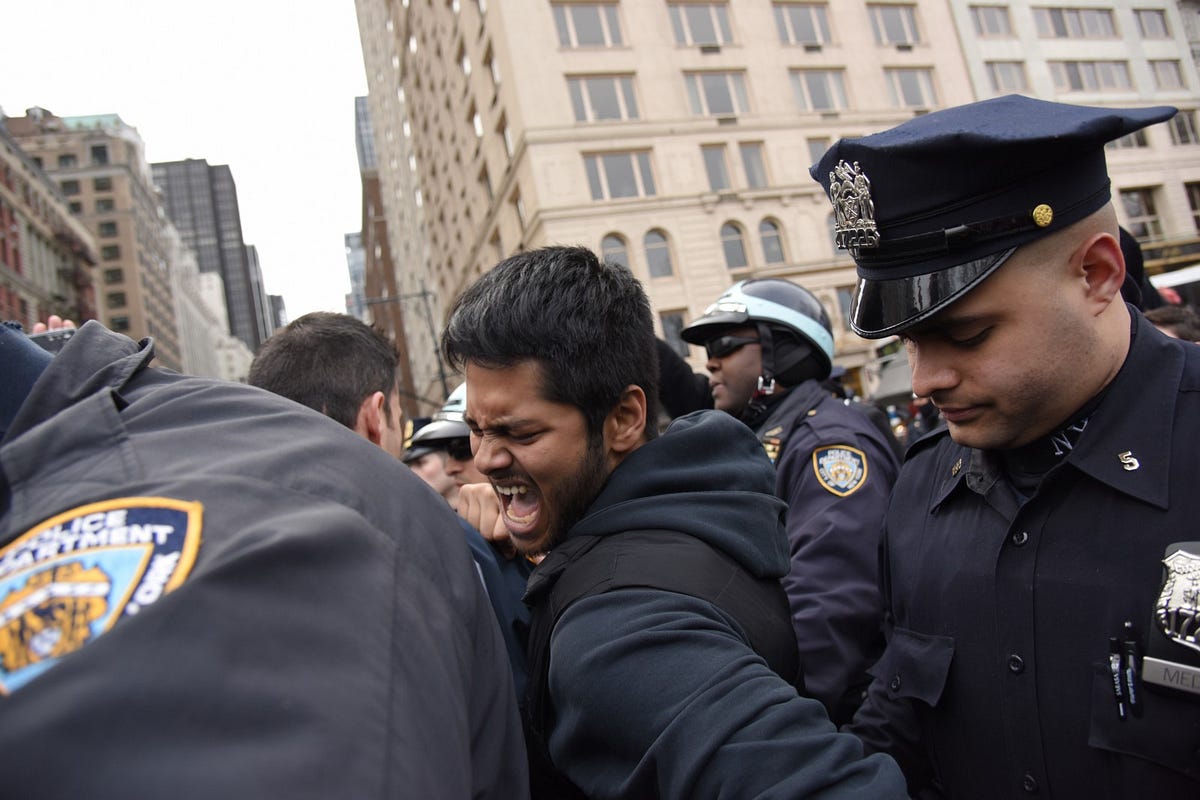Empathetic Cops Are Less Happy, Struggle More on the Beat
Police officers with a strict law-and-order ideology hold up better under public animosity than their more empathetic peers.
Based on the research of Shefali Patil

In July 2017, a New York City police officer was shot and killed as she sat in her vehicle. Miosotis Familia, an African-American mother of three, was part of a community policing unit in a tough section of the Bronx. Her assassin was an ex-con who had posted a vitriolic rant against the police online. Later, another cop got on his dashboard cam and let loose, asking why there was no public outcry:
“Where the hell are all the celebrities now? Where’s all the sports teams wearing NYPD stuff? Why is it that every thug, every career criminal gets the attention when they’re shot and killed … for victimizing people? When they’re killed by the police, they become heroes.”
His words rang with bitterness — and the sentiment is often shared by others in law enforcement. Relations between police and urban communities today are fraught with suspicion on both sides. Horrific cases captured on video in which police have shot unarmed black men have sparked riots and protests. Black Lives Matter became a meme; Blue Lives Matter became a meme.
All of which raises an urgent question: If police believe that the communities they serve and protect view them less than sympathetically, does that affect how well they perform their duties?
“That has to be a vital concern in this environment,” says Shefali Patil, an assistant professor at the McCombs School of Business. “Studies in other fields have shown that this kind of ‘image discrepancy’ — a mismatch between how people see themselves and how they think others see them — can hurt job performance,” she says. “It’s hard to interact constructively with someone who has false assumptions about you.”
An Image Problem
While most people have faced unrealistic expectations or a lack of appreciation in the workplace at one time or another, the stakes are much higher for cops. “I wanted to see if this disconnect affects how police behave on the street,” Patil says.
To do that, she first had officers in two cities answer questions that gauged how much of an image discrepancy each individual perceived — specifically, to what extent did they feel the public underestimates the demands of their job?
She also asked how they thought the criminal justice system should operate. For instance, is the goal to rehabilitate or punish offenders? Should cops engage with the community or take more of a “get tough” attitude?
The officers who completed the surveys also agreed to let Patil view their body camera footage. She then asked two experts (both retired division commanders) to rate 794 body camera videos to assess how well the officers handled their everyday duties — jail transports, traffic and DUI stops, transient arrests, car crashes, building searches and house alarm calls. They considered not just how properly or lawfully the officers responded to situations but also how professional and courteous they were. In other words, did they keep the peace?
Surprisingly, when she compared the performance ratings with the survey answers for each officer, image discrepancy seemed to have no effect. Across the group as a whole, those who felt strongly that cops are misunderstood and under-appreciated performed no differently than those who did not perceive a public perception problem.

Vicious Cycle
However, when Patil took into account the officers’ ideological views, a different — and startling — picture emerged: More conservative officers, those with a strict law-and-order outlook or who equated justice with punishment, were more likely to think the public misunderstood them, but that didn’t faze them. “The conservative officers were completely fine,” Patil says.
But cops who thought about the social causes of crime and favored a more compassionate, rehabilitative brand of justice — in short, those with traditionally liberal ideals — were another matter: When they felt the public viewed them unfairly, these officers often struggled.
Why the difference? “Conservative cops believe there should be a divide between themselves and the community,” Patil explains. “They’re not looking to start a dialogue. They see their position as one of authority, and that means keeping a certain distance. They expect conflicts and complaints and just discount them. It fits their worldview.”
Liberal officers, on the other hand, are more inclined to listen, but what they hear may rattle them. If their efforts to connect with the community are rebuffed, these cops may find themselves without a compass. For them, misaligned expectations can lead to debilitating stress, Patil says. “It creates uncertainty about how to respond in tense situations, to protect themselves and to present an image of legitimacy.”
In other words, she says, having an adversarial attitude may help officers cope with public animosity.
“The irony is that this antagonistic approach to policing is what causes the animosity in the first place. The result is a self-reinforcing cycle that’s very hard to break.”
What Can Be Done
Patil says these findings have implications for urban police departments. “The reality is that the public just doesn’t get cops. So how do you deal with that? “What I found in a related study is that when officers face these misperceptions, they actually perform better if they have standard protocols that they have to follow in specific situations.”
But doesn’t giving workers more autonomy usually improve job performance? “Not in this case,” Patil insists. “Police officers with high autonomy often do worse.” She adds that using body cameras consistently is an overlooked resource. Studies have shown that cameras reduce complaints of police abuse, and Patil finds that they also reduce officers’ perceptions of conflict.
“The cameras also watch the public,” she says. “It puts both sides on their better behavior. If everyone knows the facts are being recorded, that can reduce tension and distrust during an encounter.”
Finding Common Ground Regardless of Ideology
Patil’s findings illuminate the complexity of improving relationships between police and a community. Over time, officers who desire the most communal, rehabilitative relationships with the public may be the ones most likely to exit their agencies because they are less effective in coping with public misunderstandings. That’s a loss agencies can ill afford.
For conservative officers, it is important to acknowledge that public misunderstandings are a reality, paying attention to finding ways for agencies to maintain (or even enhance) officer effectiveness under such conditions.
“‘The Public Doesn’t Understand’: The Self-reinforcing Interplay of Image Discrepancies and Political Ideologies in Law Enforcement” was published in the Administrative Science Quarterly.
Shefali V. Patil is an assistant professor of management at the McCombs School of Business at The University of Texas at Austin. She received her Ph.D. from the Wharton School. Patil’s research focuses on how employees cope with various evaluative challenges, including perceived public misunderstandings of their jobs, public scrutiny and criticism, and monitoring — and the effects these have on their decision-making, proactivity, and job effectiveness.
Story by Lee Simmons.


